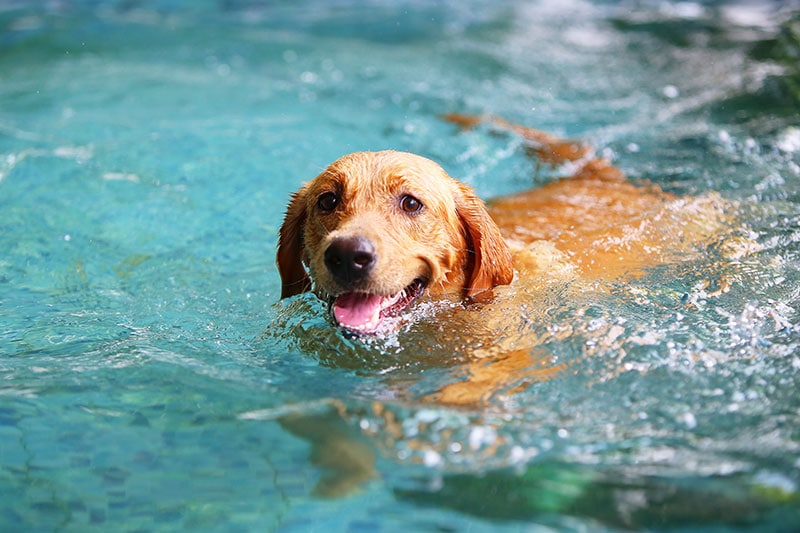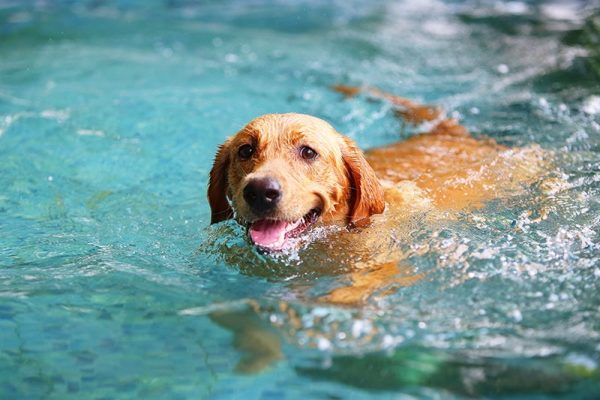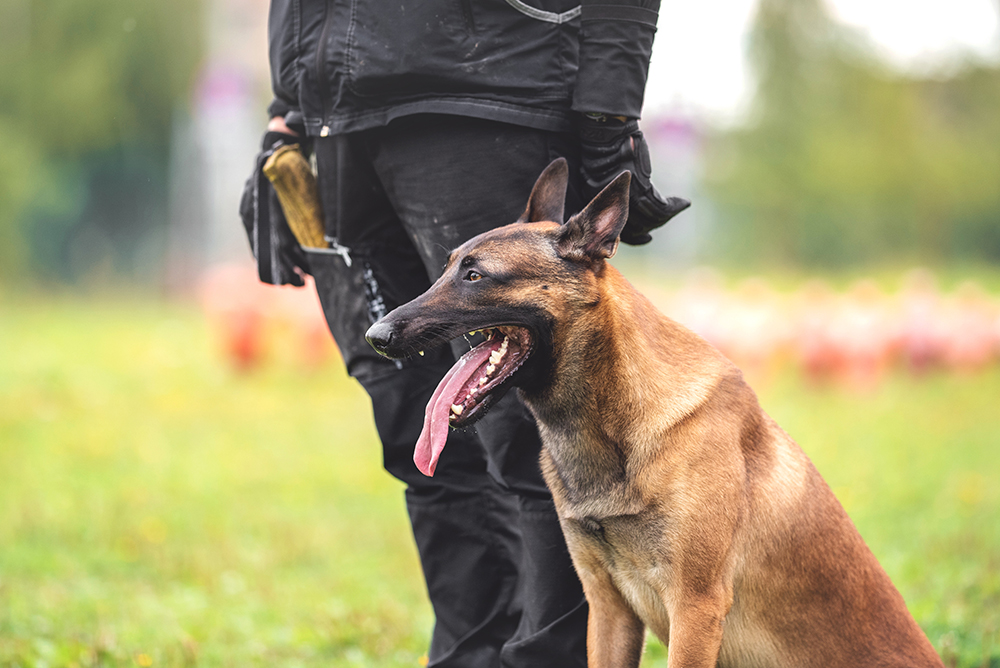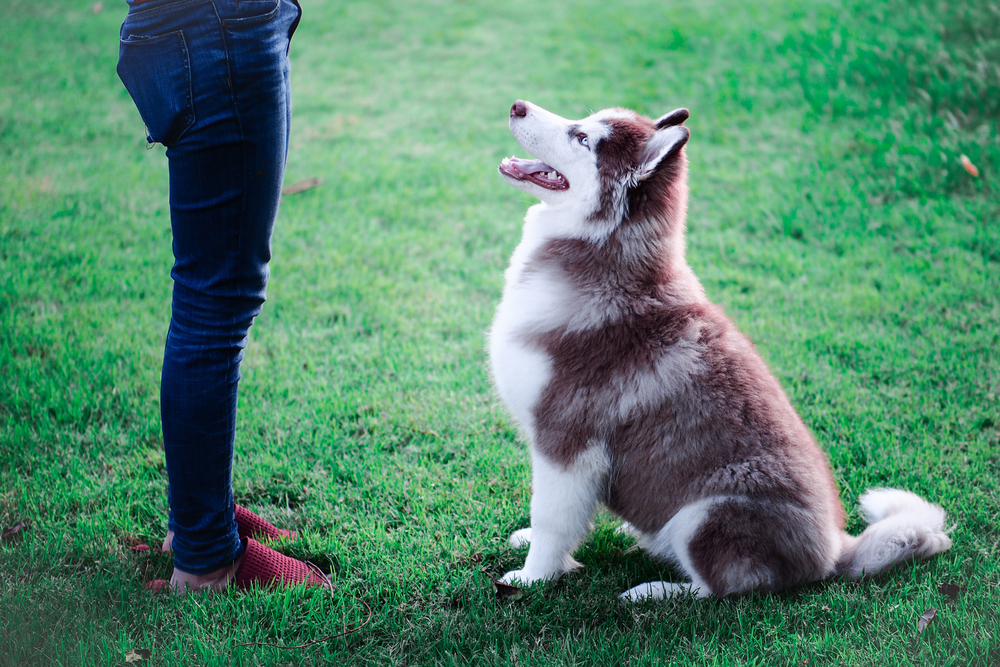Click to Skip Ahead
There are few activities more fun than taking a dog to a beach, lake, or other body of water and watching them splash around. Some dogs have a strong attraction to water, and many seem to know how to swim instinctively. That brings up a question many pet parents have about their dogs, namely, do dogs need swimming lessons?
Some dogs are not natural swimmers; some canines don’t swim well, and others don’t swim at all. It depends on the breed and several other factors, but generally, all dogs that have access to a pool or water body should receive swimming instructions from their owners.
What are Dog Swimming Lessons?
Dog swimming lessons, either by the dog owner or a paid professional, don’t teach dogs to swim, per se. Instead, dog swimming lessons teach your dog how to act, react, float, and move around in the water. The lessons also help anxious dogs around water and include training on how to get out of a pool, which is the #1 place where dogs drown.
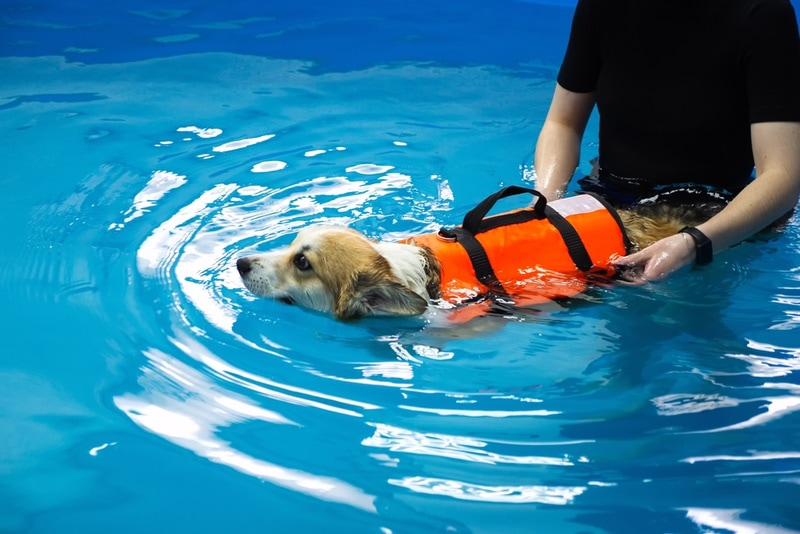
Should All Dogs Have Swimming Lessons?
Some dogs, especially larger breeds like the German Sheperd, might not need extensive lessons but require guidance. Breeds like the Portuguese Water Dog swim like champions from birth and have webbed feet to help them swim even better. They take to water with ease and likely won’t need any dog swimming lessons (except for where to shake themselves dry).
On the other hand, smaller dogs and dogs with brachycephalic muzzles will always benefit from swimming lessons. However, the emphasis will be on lessons like not venturing into deep water and how to enjoy the water safely.
It’s important to remember that “dog swimming lessons” is a bit of a misnomer. You can’t, for example, teach a dog to do the backstroke or the butterfly stroke, but you can teach them how to stay upright, respect the water, and have a good time. From that perspective, most dogs benefit from at least some basic swimming lessons.
Can Some Dogs Swim with a Life Jacket?
Dog life jackets have been around since the 1990s and have been helping dogs swim and saving their lives ever since. Like life jackets made for humans, a dog’s life jacket allows them to move about unencumbered by the jacket. These life-saving dog devices are especially important for breeds like the Whippets, who have virtually no body fat and have a hard time staying afloat, or the Bulldogs and other brachycephalics and sturdy dogs who have a hard time keeping their heads out of the water.
It’s worth noting that many pet parents with dogs that can swim well still use life jackets when they’re on the water for a long time. That way, if their pet suddenly becomes exhausted, they can relax and float rather than sink.
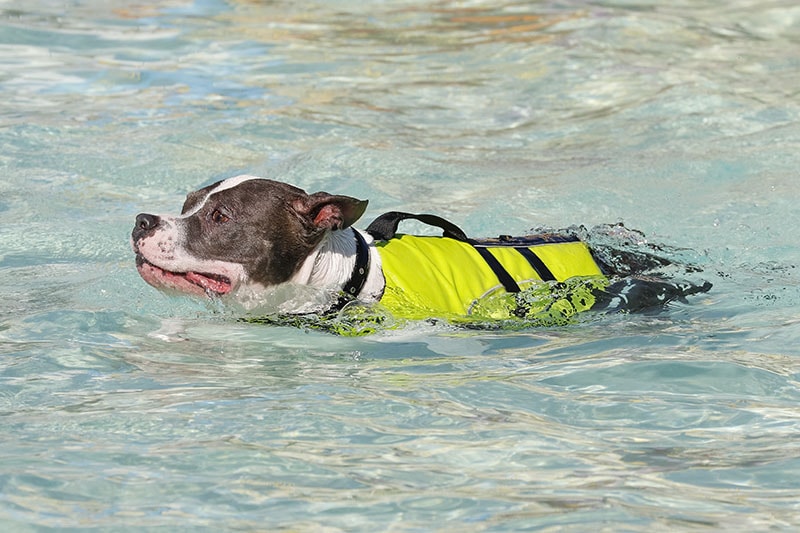
Which Breeds Are the Best Swimmers?
When it comes to swimming, some breeds are markedly better than others. They seem to know how to swim at birth and are completely at home in the water, seeking it out and enjoying every minute. The 10 breeds below are considered the best swimmers and would make a good choice if you spend a lot of time around water.

Which Breeds Can’t Swim (Or Don’t Swim Well)?
As mentioned, some breeds have difficulty swimming. Most are smaller pups with brachycephalic faces and muzzles. Some have barrel-shaped bodies that make it challenging to stay upright and float in the water, and dogs like the Dachshund have tiny legs that make swimming almost impossible. Others have so little body fat that will have a tendency to sink and a hard time staying afloat.
The 10 dogs below aren’t great swimmers, but many can enjoy the water with the help of a life jacket. However, even with a life jacket, some dogs don’t like the water.
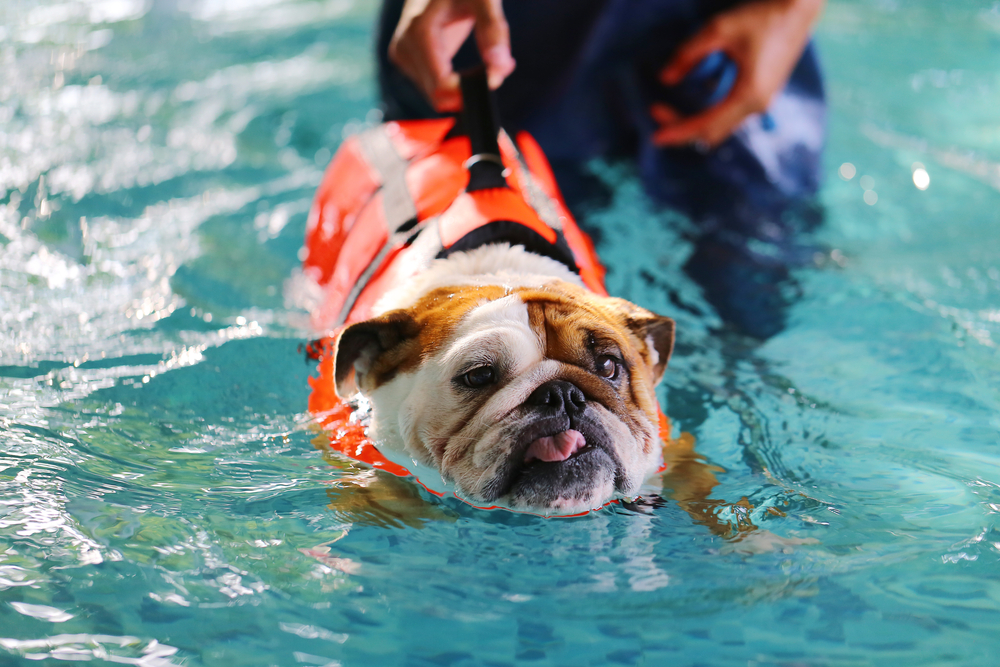
Is Swimming Stressful for Dogs?
As long as your dog is allowed to enter and exit the water of their own free will, it is not stressful for them to swim. However, if you were to take a dog that did not like the water and throw them in, it could cause your pet a huge amount of stress.
Some dogs can drown, which is why throwing a dog into any body of water is inhumane. Even if your dog has innate swimming skills, introducing them to the water gradually, slowly, and gently is ideal.
The 5 Dog Swimming Tips
Below are some of the best tips on how to help your dog swim and enjoy the water. They will also help you keep your canine safe when swimming and allow everyone to have a good time without stress or anxiety.
1. Start Slowly
Many pet parents make the mistake of going too fast when introducing their dogs to the water. The problem is that, for some dogs, it can be traumatic and cause an ongoing fear of water. It is best to go slowly and allow your dog to experience the water on their own time.

2. Buy a Dog Life Jacket
We mentioned life jackets above, and it is worth mentioning again because even if you have a dog that swims well, a life jacket is a good investment. For dogs that can’t swim well, a life jacket will allow them to enjoy the water more fully.

3. Always Start in the Shallow End
Unless you happen to be out in the middle of the ocean or lake on a boat, almost all bodies of water have a shallow end, and it is where you should introduce your dog to the water. The shallow end empowers your pet to take their time, experience the water slowly, and decide how far in they’re willing to go.
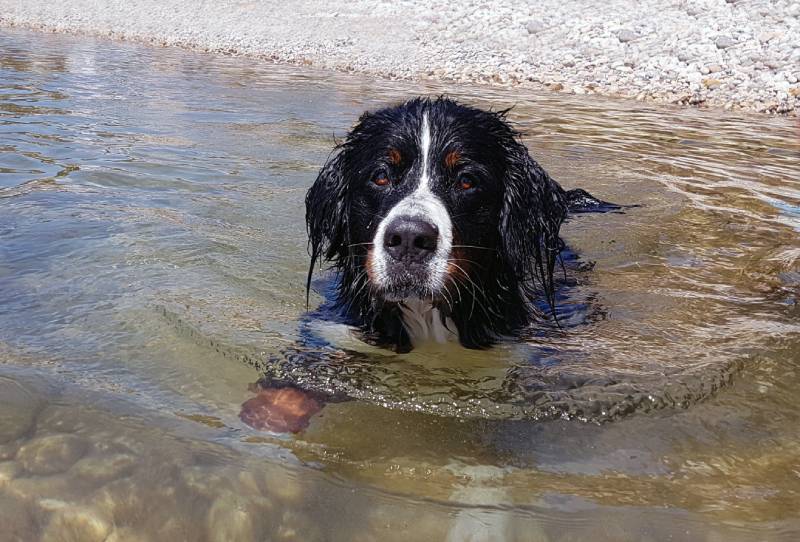
4. Install a Dog Ramp in Your Pool
While fencing off a pool is highly recommended, installing a dog ramp in your pool is one of the best methods of preventing your dog from drowning. As the name implies, a dog ramp is simply a ramp that sits in your pool and allows your dog to get out of the water easily. Veterinarians recommend using pool dog ramps in every type of pool if you own a dog, but especially if your design uses ladders to get in and out like most above-ground pools.

5. Ask a Neighbor with a Dog That Swims Well to Swim with Your Dog the First Time
If this is the first time your dog is swimming, having another dog around to show them the ropes is helpful. Watching another dog swim will help your pet learn the correct techniques.

6. Offer Them Your Support & Keep a Close Eye on Them
It is crucial to offer your presence and a helping hand while your pup is learning how to move in this completely different environment. Once they have the experience and develop their confidence through practice you can relax a bit. However, please keep in mind that it is important to always keep an eye on them and ensure they are enjoying the activity, can breathe well,l and can safely exit the water when needed.

Final Thoughts
Although you cannot teach a dog how to swim like Olympian Mark Spitz, you can help your pet enjoy the water and do it safely. Some breeds take to the water like ducklings, while others struggle without instructions. Swimming lessons are a worthwhile investment if you’d like to ensure your dog enjoys the water safely.
However, depending on your dog and its capabilities, you could teach them the basics yourself. Although swimming lessons may not be essential for every breed, monitoring your dog in the water and staying close by is vital.
Featured Image Credit: Wasitt Hemwarapornchai, Shutterstock

